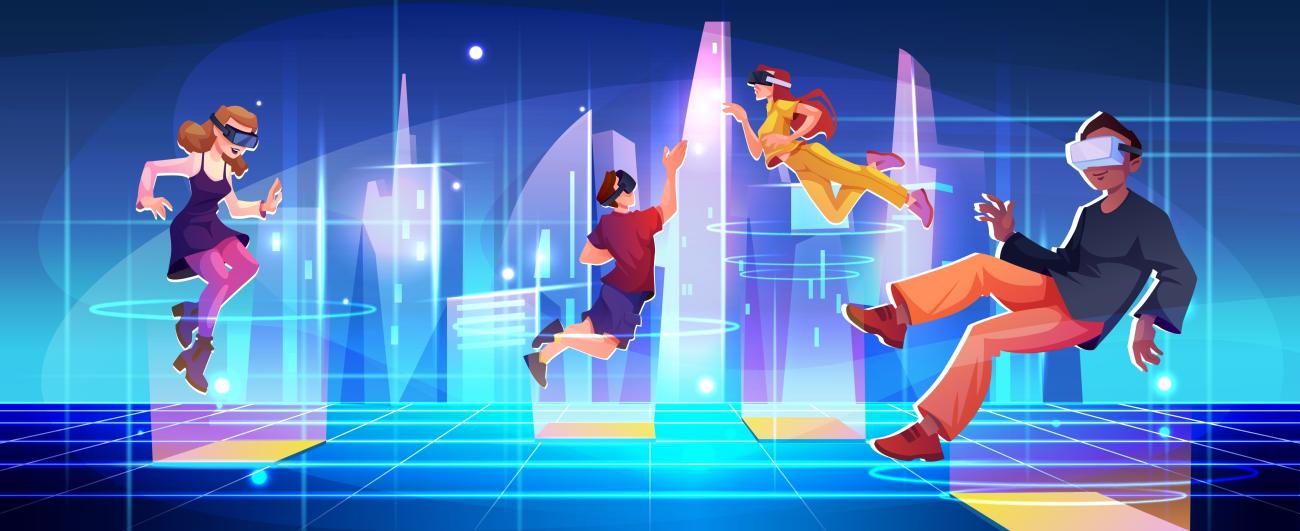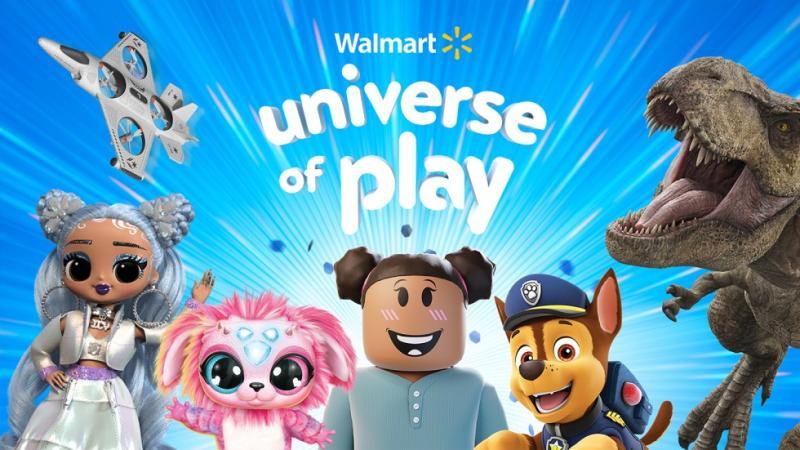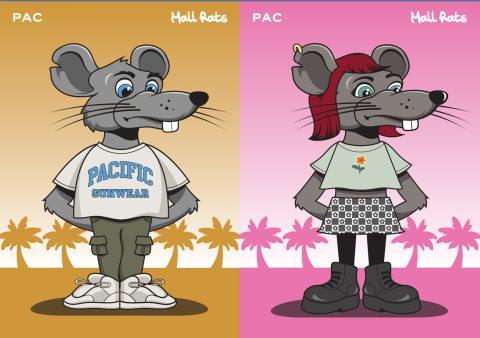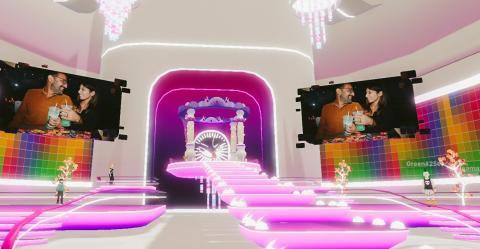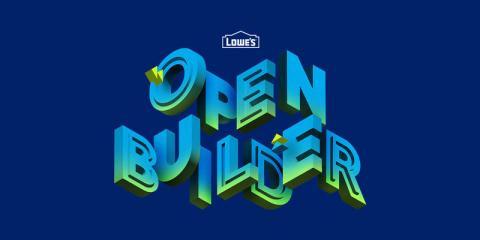Top Retailers Like Walmart and Lowe's Enter the Metaverse: How to Harness the Power of Web3, VR, and AR
What is the metaverse? There’s no hard and fast rule as it is a technology and concept that is largely still in development, particularly within the retail industry, but RIS is committed to nailing down and outlining a metaverse-focused strategy.
Most sources say it’s simply a virtual reality space where participants can interact with a computer-generated environment (and other users). Kris Kolo, global executive director of the VR/AR association, defines the metaverse as “next-gen internet.”
Metaverse Use Cases
According to Deloitte, the top use cases span across five categories: marketing, product, commerce, supply chain/ops, and talent. Within these buckets, the highest-priority items are product placement, product testing and try-on, enhanced e-commerce shopping, manufacturing design and testing, and employee collaboration.
“To make any of these use cases a reality, companies need to be prepared to leverage the foundational technologies underpinning the metaverse while nimbly adapting to its rapid rate of change,” said Deloitte in its “Retail in the Metaverse: Understanding Opportunities” article.
“An online virtual platform with 3D capabilities that enables immersive experiences consisting of avatars (personal identities), gaming/social aspects, and in many cases virtual and/or augmented reality — resulting in more engaging, stimulating, and expressive experiences that are essential to get the attention of younger demographics,” Kolo tells RIS.
RIS has seen a large range of implementations across the retail space.
The best use case? Right now, major retailers like Walmart, Crate & Barrel, and Pacsun are leveraging the technology to get closer to consumers, providing them with an experiential way to connect with the brand — and sometimes even as a path toward ancillary revenue.
We took a look at some of the major metaverse rollouts of the past year, tapping into leading retailer examples, timely research, and expert voices to highlight innovations in the space and provide a guide for harnessing the power of virtual reality within your own organization.
Top Retailers Jumping Into the Metaverse
Crate & Barrel
Crate & Barrel is among the first retailers to focus on metaverse growth by expanding its leadership team. The company promoted Sebastian Brauer to senior vice president for product design, development and metaverse. While he continues to manage the product design, development, and visual merchandising teams for Crate & Barrel brands, he also now leads the company’s vision for the future metaverse and web3.
"I am honored to take on this new, innovative role," said Brauer in a statement. "My passion leading teams to enable transformation — especially by bridging the physical and digital worlds through design thinking, collaboration, and creativity — will allow us to explore new mediums, dimensions, and technology to effectively introduce CBH to a new, modern, and experiential marketplace."
RIS expects significant growth across leadership in virtual and experiential strategies, as Gartner predicts a quarter of consumers will be using the metaverse daily by 2026.
Walmart
This past September, Walmart announced two new experiences on the Roblox platform: Walmart Land and Walmart Universe of Play. The two new spaces provided unique interactive content and entertainment, bringing Walmart’s “isles” to life within a virtual format where consumers could access fashion, style, beauty, and entertainment items through Roblox. Within Universe of Play, the Roblox community also gained access to “the ultimate virtual toy destination” ahead of the 2022 holiday season. Virtual amenities included an interactive piano experience, a dance challenge, trivia, a motion-capture concert, games, and avatar accessories, among others.
Roblox is a subset of the true metaverse, says Cathy Hackl, chief metaverse officer and founder of Journey — a web3/metaverse design consultancy firm.
“To me, there is only one capital ‘M’ metaverse, and within that metaverse there are lower case ‘m’ metaverses, but I prefer to call them virtual worlds,” she tells RIS. “So to me Roblox, Fornite, Second Life are virtual worlds.”
Pacsun
Pacsun is experimenting with both Roblox and NFTs. The company just launched its second Roblox initiative, Pacsun Los Angeles Tycoon on Roblox. At virtual, multi-day festival ComplexLand last spring, Pacsun highlighted its resell initiative, PS Reserve, within a three-level store that gave consumers access to products from Pacsun, Playboy, and the brand’s new partner Cloud9, an esports organization.
The experience married augmented reality with real-life shopping, allowing consumers to identify a product they wish to purchase within the virtual space and then directing them to Pacsun’s website where they can buy the physical version.
Pacsun also introduced mall rat NFTs, showcasing them within a virtual gallery. Consumers could view the art, place a bid, and add a piece to their personal collection. Those who purchased received a sneaker from Pacsun’s resell program.
Monetization within the space provides a breadth of opportunities for retailers.
“Right now, the most important thing for retailers to do is to understand the shift from 2D to 3D commerce and expand their thinking about 3D as an e-commerce tech to the near future of the hybrid retail experience,” Sonia Schechter, co-chair of our VR/AR Association retail committee, tells RIS.
H&M
H&M is also merging virtual reality with its sustainability initiatives. The company launched a gamified consumer experience, H&M Loooptopia, on the Roblox platform, earlier this year. While much of the experience is similar to other Roblox initiatives, H&M allows consumers to unlock rare elements within the game by recycling old clothes.
"People who shop and wear H&M garments and accessories are increasingly spending time in virtual spaces and digital worlds. The H&M Loooptopia Experience on Roblox is now allowing us to explore new ways to engage with our current and new customers in the places they love to be, both online and offline," said Linda Li, head of customer activation and marketing, H&M Americas, in an earlier statement.
Taco Bell
Taco Bell has been leveraging 3D virtual world and browser-based platform Decentraland for its web3/metaverse initiatives. Rather than recreating a storefront within the virtual world, the fast-food retailer has zoned in on lifestyle experiences, launching a wedding-themed contest within a replica of its Las Vegas Wedding Chapel. Earlier this month, Taco Bell announced that out of over 300 couples who applied to win a Taco Bell metaverse wedding, Sheel Mohnot and Amruta Godbole said “I do” on February 24 in Decentraland.
“We're always looking for new ways to meet our fans where they already are and provide them with signature Taco Bell experiences… even when that's in the metaverse," said Sean Tresvant, Taco Bell's chief brand officer, last year.
Why Decentraland? According to DCL Metrics, the website has around 8,500 unique visitors during a single day.
“These platforms are already working in the virtual space and expanding,” says Hackl. “Brands are seeing the value of entering the metaverse because some of their customers are already spending time in those virtual worlds.”
Lowe’s
Home improvement retailer Lowe’s has taken a different spin on the metaverse, launching construction efforts with a building hub that provides free downloads of product assets. Through the asset hub, virtual builders could download more than 500 3D product assets that mimic real-world items across several categories, including lighting, patio furniture, area rugs, kitchen and bath accessories, and decor accents.
These assets could be used across metaverse and non-metaverse environments, including gaming, AR, and creative design, according to Lowe’s.
The company also launched a limited NFT wearable collection, allowing the first 1,000 builders in Decentraland to update their avatars with themed boots, hardhats, and other accessories.
"We know our customers have benefited greatly from being able to explore and test home improvement projects in the virtual world before taking the leap to implementation in their real-world homes or job sites," said Seemantini Godbole, chief information officer of Lowe's, in an earlier statement. "By entering the metaverse now, we can explore new opportunities to serve, enable and inspire our customers in a way no other home improvement retailer today is doing."
A Guide to Building a Metaverse Strategy
What stands in the way of a full-on metaverse implementation at the retail level? The industry’s slow advancement in the field, for one, as companies look to implement metaverse-like experiences that are low-tech commitment and low-cost.
According to Deloitte, scalability is often an issue with several obstacles such as:
- Interoperability: Because of the metaverse’s large scale (being composed of multiple worlds), it can be difficult for users to navigate, and for retailers to appropriately leverage the space as a selling mechanism.
- IT Enablement: A true metaverse environment requires advanced tech, such as VR headsets and a high-speed internet connection, which may not be widely available across households.
- Trust: Digital currencies and products like NFTs often carry cybersecurity and fraud risks, which can cause consumers to lose trust in the technology.
- Experience: Much of today’s available metaverse experiences are still in their infancy, featuring clunky graphics and an overall experience with room for improvement. Deloitte says consumers may lose interest once the initial novelty wears off.
- Cost: There’s a heavy sustainability burden associated with metaverse aspects such as crypto and blockchain, which could impede progress.
Despite these roadblocks, there are several tactics retailers can embrace to continue progress in the space. They include:
1. Moving Beyond Roblox
While useful as a way to initially introduce virtual experiences for your brand, there are several more advanced use cases that are worthwhile investments. For example, Hackl recommends diving into other areas like artificial intelligence.
“With the emergence of virtual twin models and digital avatars, AI can be used to model consumer habits and preferences to help businesses create experiences tailored to their customers,” she says. “It will be a great way for retailers to engage customers with their brand and will evolve hyper-personalization.”
2. Digitizing the Store Experience
The e-commerce space is full of untapped potential for digitizing the store experience. Retailers are able to bring in-store experiences to life through e-commerce strategies that blend the line between virtual and real life shopping.
“3D, augmented reality, and virtual reality will play a critical role in the digitization of the store experience,” says Schechter. “Over the next few years, we'll see bigger investments in 3D e-commerce, and Web3 experiences as the metaverse sorts itself out and finds an audience.”
3. Leveraging Monetization Within the Virtual Space
From NFTs to cashing out in the virtual space but gaining real-life products, there are myriad ways retailers can monetize their metaverse experiences.
According to Marty Resnick, research vice president at Gartner, by 2026, 30% of the organizations in the world will have products and services ready for the metaverse, as “enterprises will have the ability to expand and enhance their business models in unprecedented ways by moving from a digital business to a metaverse business.”
4. Focusing on Hybrid Retail at Its Core
It doesn’t have to be one way or the other: both brick-and-mortar and digital experiences are valuable, particularly as today’s consumers shop everywhere, all at once. Merging the two to create a unique, experiential shopping experience is the best approach.
“The key to enhancing and expanding these immersive experiences is collaboration, co-creation, and also potentially embracing new business models,” says Hackl. “I think we will also continue to see a need for more experiential physical retail that caters to more Gen Z, and now Gen Alpha audiences.”
She adds that retailers need not worry about going all-in at the beginning, but developing a strategy early on (no matter how small) will be beneficial.
“Retailers do not have to go big when exploring the metaverse, but they should be developing a strategy that best fits their vision and goals because once they enter a virtual space there will be many learnings and also the possibility of connecting with new audiences,” says Hackl.
5. Investing in Metaverse Education
Lastly, there’s nothing more valuable than staying updated on the latest innovations and changes in the space. By implementing metaverse-focused leadership at the executive level and prioritizing training and education in the space, retailers will be able to quickly shift gears and jump on the latest opportunities.
Resnick says it’s still too early to recognize which investments will be viable long-term, but suggests that product managers take the time to “learn, explore, and prepare for a metaverse in order to position themselves competitively.”
If industry experts are right, the future of the metaverse boasts infinite potential, and advancement will occur faster than initially thought.
“We believe that the metaverse is bidirectional, that over time, while you will be able to enter the metaverse, so will the metaverse be able to enter your physical spaces through things like holographic projections. Virtual reality is just one mere entry point,” — Mike Proulx, VP Research Director at Forrester Research, Tech Transformation


